Blow Up 50 years later
Written by Joe D on January 9th, 2017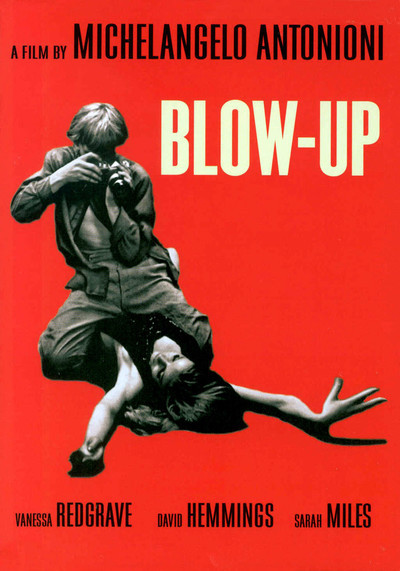
I first saw Michelangelo Antonioni’s film Blow Up many years ago. I liked it for it’s imagery, the sexy photography, the swinging London scene it took place in, seeing Jimmy Page and Jeff Beck playing with the Yardbirds, probably the same reasons that made it Antonioni’s biggest box office hit. I just rewatched it and I have a different take on it now. It seems like a quantum detective story. Quantum physics tells us that what we see and perceive as solid matter is really just a bunch of organized energy fields, things are mainly composed of space, in that light watch our protagonist of Blow Up. David Hemmings portrays a successful photographer. When we meet him he’s a Materialist, always trying to buy things, like the antique shop or his neighbors latest painting. He tells his editor he wishes he had piles of money. “Why?” “To be Free.” “Like him” says the editor pointing to a photo of a bum that Hemmings just snapped. The editor also advises Hemmings that he should look at photography like a detective in a story, “always looking for Clues.” This proves to be a prophetic statement and starts our photographer on his trip down the Rabbit Hole. Hemmings shoots some stills in a nearby park, in a beautifully photographed sequence, he follows a couple that are frolicking and kissing , the British overcast skies make for incredibly rich color and texture. Antonioni must have been ecstatic , he was a fanatic for color, paining buildings or environments to suit he is needs.
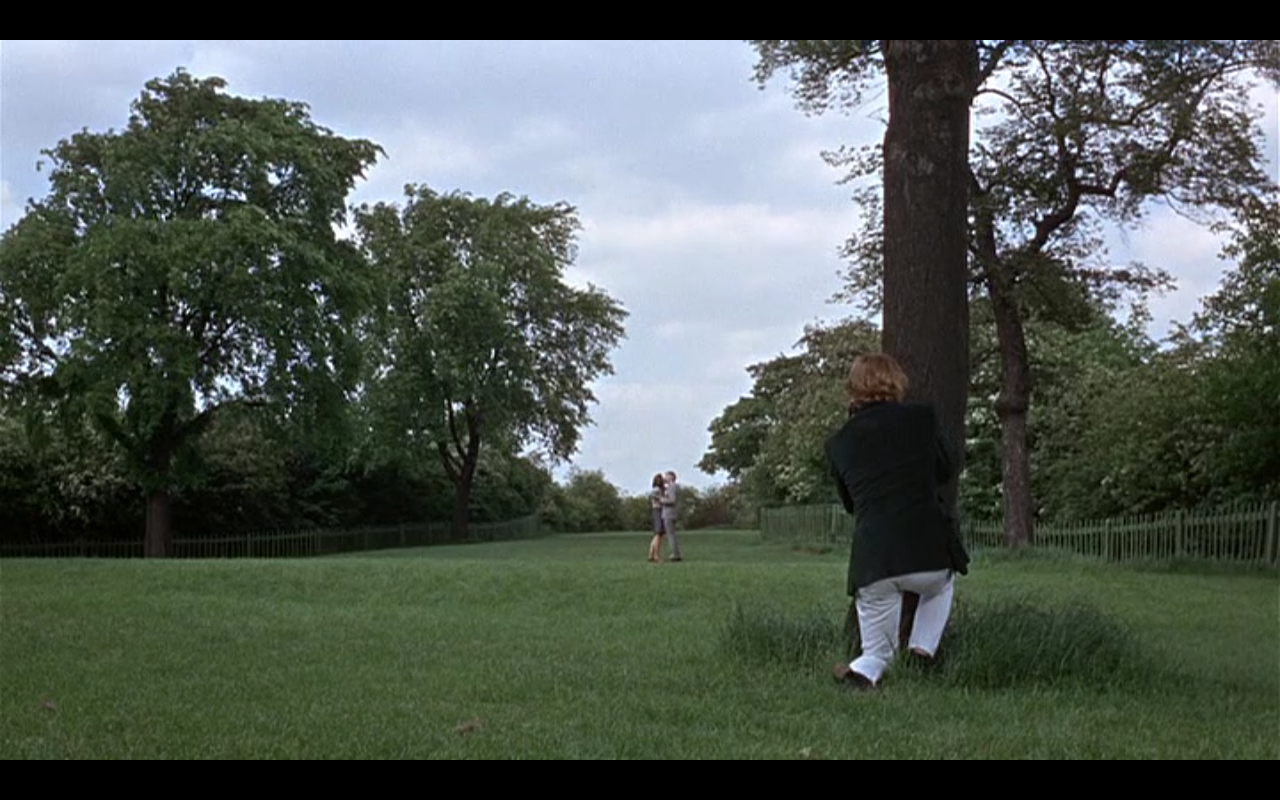
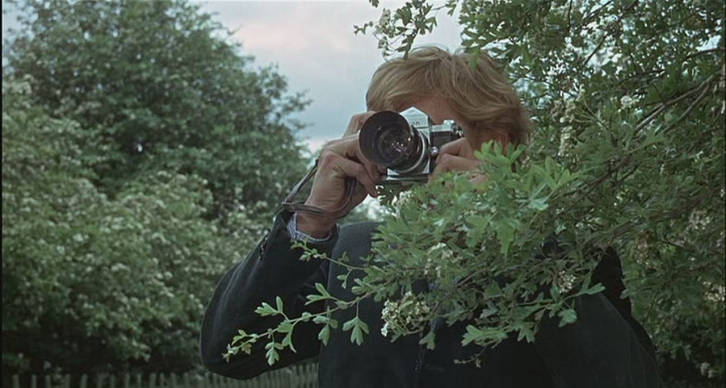
The photographs he takes become the clue his editor spoke of and by blowing up and carefully examining them he discovers a murder was committed.
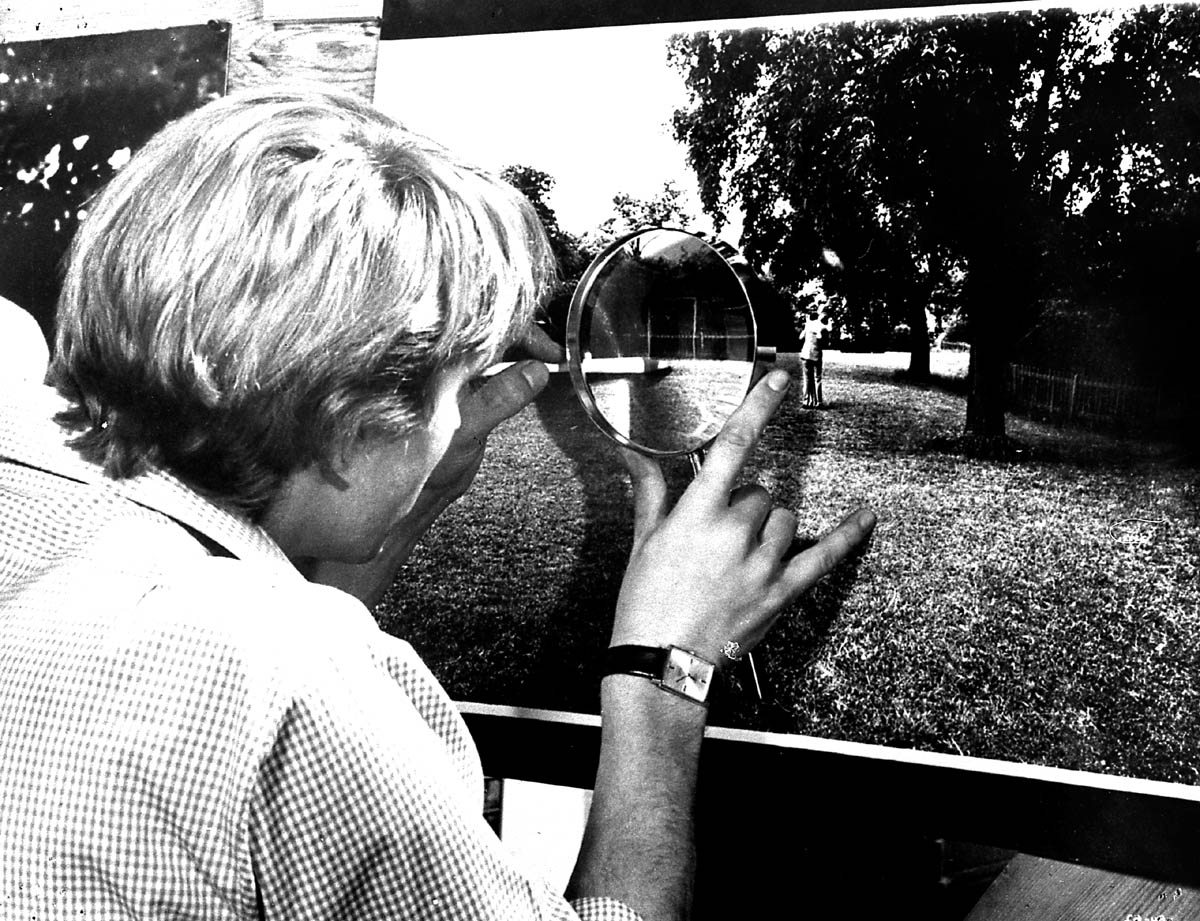
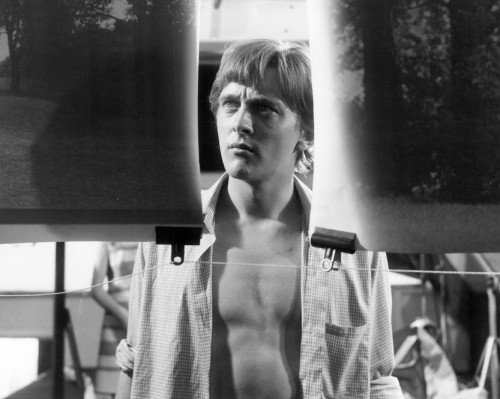
He blows up the image of the dead man that it becomes an abstract collection of dots and blotches, very similar to his neighbors abstract painting so comments his neighbors girlfriend on seeing it.

His marginal morality does not compel him to call the police, instead he thinks these images will be a great ending to his new book. He goes to the park and finds the body but is spooked by a sound and heads back home, when he gets there all the images and negatives are gone, except the extreme blow up that looks like a Jackson Pollack painting. He goes out to meet his agent, sees the girl from the park and tries to follow her, like a detective in a movie. This brings him to the Ricky Tick club where the Yardbirds perform.
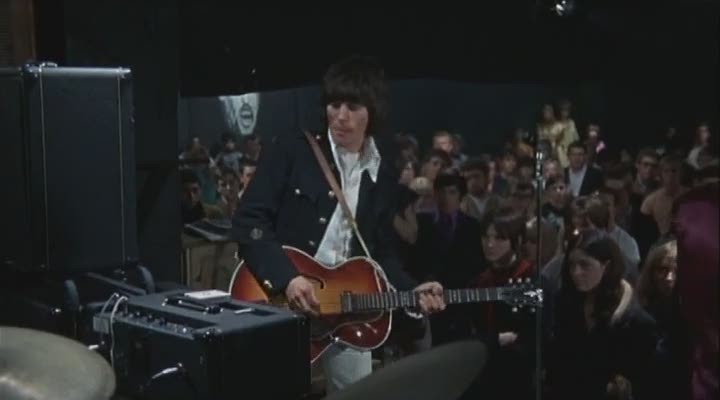
He manages to catch Jeff Becks guitar neck when Beck having stomped his guitar to bits tosses it into the crowd, causing a mad scramble as they all try to grab it. Hemmings wins out and runs out of the club only to discard the neck like so much trash. After finding his agent at a party, getting loaded and passing out, he awakens the next day returns to the park but he’s too late, the body is gone. He sees a group of Mimes playing tennis without a ball or racquets, al the Mimes watching follow the imaginary ball with their eyes as its batted back and forth.

Hemming watches amused but when the ball is hit over the fence near him and the Mime playing looks to him beseechingly to retrieve it, Hemmings does so, picking up the invisible ball and throwing it back. Then he too tracks the back and forth movement with his eyes and we hear on the soundtrack the sound of a tennis ball being hit and returned. Has he learned a lesson in the Non-Materiality of the Universe or succumbed from the peer pressure of all the watching Mimes to see the ball that isn’t there. I believe the former because after a few moments he shakes his head, retrieves his camera and then vanishes himself as the words THE END appear.
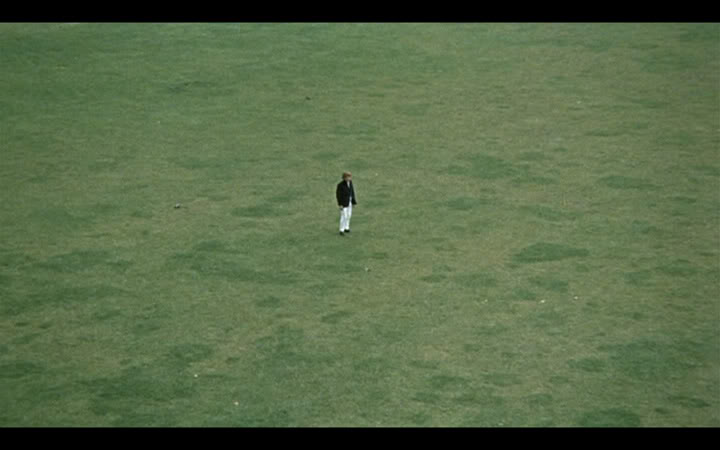
It’s an amazing comment on perceived reality, also perhaps a comment on Art, Critiscim, peoples response to anything new. They can’t see it until someone explains it to them. Supposedly when Columbus’ ships anchored off the coast of the new world, the natives could not see them as they were so foreign to their experience, days later a sham explained to the tribe that they were there and what they were and then they were visible.
Come to think of it I heard somewhere that Antonioni was a tennis pro before he became a filmmaker. Just think of all that time he had his eye on the ball, how important that fuzzy sphere was to him, how much effort and concentration he put into that. For him to make the climax of his film, the moment where the protagonist changes his point of view a tennis game speaks volumes.
